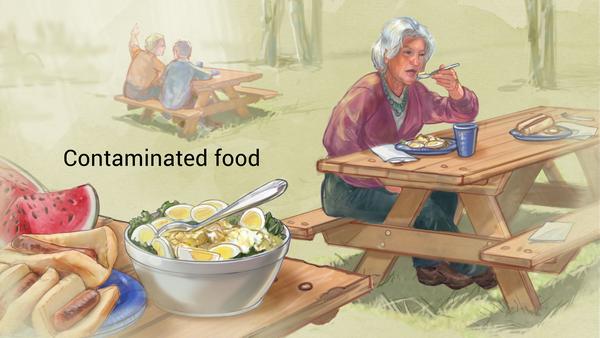The most common ways that harmful organisms are spread are:-
During food processing- It is normal to find bacteria in the intestines of healthy animals that we use for food. If bacteria come in contact with meat or poultry during processing, they can contaminate the food. Campylobacter, salmonella, and E. coliE. coli are often spread in this way. In one test, campylobacter was found in almost half of the raw chicken breasts tested.
During food growing- Fresh fruits and vegetables can be contaminated if they are washed or irrigated with water that is contaminated with animal manure or human sewage. Staph food poisoning and shigellosis are often spread through contaminated water.
During food handling- Food can be contaminated when an infected person handles the food or if it comes in contact with another contaminated product. For example, if you use the same cutting board for both chopping vegetables and preparing raw meat, you risk contaminating the vegetables.
Through the environment- Many harmful organisms that are commonly found in dirt, dust, and water can find their way into the foods we eat. These organisms include Clostridium perfringens and Cryptosporidium parvumCryptosporidium parvum. Environmental conditions-such as water polluted by farm runoff-may make this type of infection more frequent. Home-canned foods that have not been prepared properly may contain another organism, Clostridium botulinum.



 Contact Us
Contact Us







 Hospitals
Hospitals
 Doctors
Doctors
 Diagnostic
Diagnostic
 Pharmacy
Pharmacy
 Health Tips
Health Tips
 Blog
Blog

























Comments